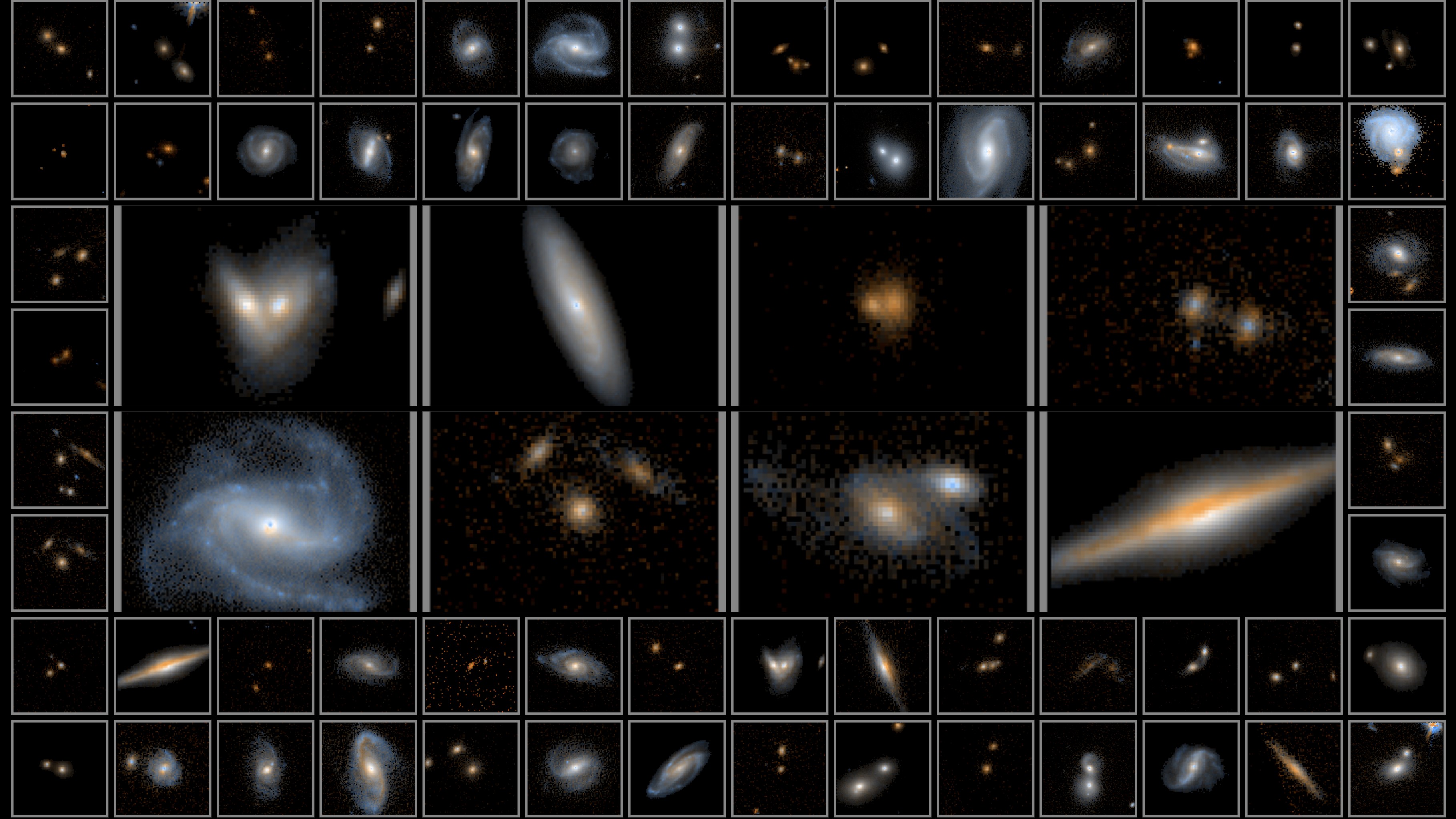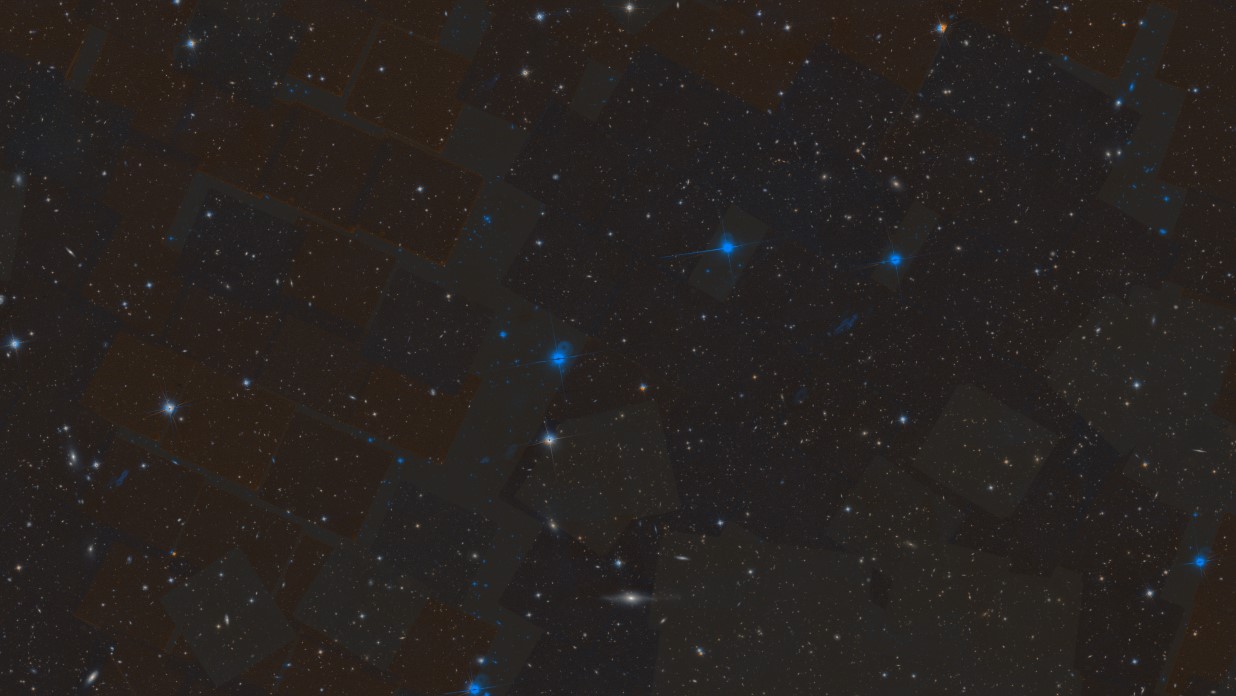Hubble Space Telescope's largest-ever infrared image peers back 10 billion years
The work paves the way for the James Webb Space Telescope.

The largest near-infrared image of galaxies ever taken by the Hubble Space Telescope has provided a playground for astronomers who are seeking out potential targets for the James Webb Space Telescope.
The image is the result of a project called 3D-DASH and was captured by the Hubble Space Telescope's Wide Field Camera 3 (WFC3), with additional archive data from Hubble's Advanced Camera for Surveys. It spans 1.35 square degrees of the sky, equivalent to about six full moons, and contains thousands of galaxies. The aim is to identify the galaxies worthy of further study by the James Webb Space Telescope and other telescopes in the future.
"I am curious about giant galaxies, which are the most massive ones in the universe formed by the mergers of other galaxies," said Lamiya Mowla, an astronomer at the Dunlap Institute for Astronomy and Astrophysics at the University of Toronto and leader of the new research, said in a statement. "How did their structures grow, and what drove the changes in their form? It was difficult to study these extremely rare events using existing images, which is what motivated the design of this large survey."
Related: The best Hubble Space Telescope images of all time!
Ordinarily, it would have taken Hubble 2,000 hours' worth of observations to build an image this large, but Mowla's team used a new technique called Drift and Shift (DASH), which takes multiple shots and stitches them together, assembling individual images eight times larger than WFC3's typical field of view (0.04 x 0.04 degrees). Furthermore, rather than taking one image every time it orbits Earth, Hubble could take eight images using the DASH technique. With a total of 1,256 individual WFC3 shots, it took just 250 hours of observing time to complete the entire mosaic.
Most of the galaxies in the image are visible as smudges of infrared light. The most distant ones are seen as they existed about 10 billion years ago, and the light of brilliant star-forming regions within them have been redshifted by the expansion of the universe into near-infrared wavelengths. You can see these galaxies in more detail in an online interactive version of the image from the 3D-Dash image explorer.
Unlike Hubble, Webb will be able to scrutinize these galaxies in greater detail, thanks to the increased light-gathering power of the newer telescope's 6.5-meter (21.3 feet) mirror. With Webb's first science-quality images set to be released July 12, the publication of the 3D-DASH data is timely indeed.
Get the Space.com Newsletter
Breaking space news, the latest updates on rocket launches, skywatching events and more!

For larger survey images, astronomers will have to wait for the European Space Agency's Euclid mission and NASA's Nancy Grace Roman Space Telescope, which will have greater fields of view (0.79 x 1.16 degrees and 0.8 x 0.4 degrees, respectively) than Hubble and Webb and are set to be launched in 2023 and 2027, respectively.
The research has been accepted for publication in The Astrophysical Journal, and a preprint version is available via the arXiv database.
Follow Keith Cooper on Twitter @21stCenturySETI. Follow us on Twitter @Spacedotcom and on Facebook.
Join our Space Forums to keep talking space on the latest missions, night sky and more! And if you have a news tip, correction or comment, let us know at: community@space.com.

Keith Cooper is a freelance science journalist and editor in the United Kingdom, and has a degree in physics and astrophysics from the University of Manchester. He's the author of "The Contact Paradox: Challenging Our Assumptions in the Search for Extraterrestrial Intelligence" (Bloomsbury Sigma, 2020) and has written articles on astronomy, space, physics and astrobiology for a multitude of magazines and websites.









